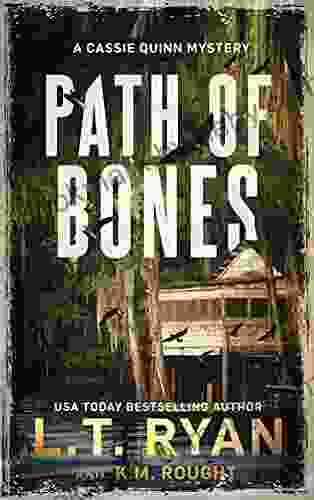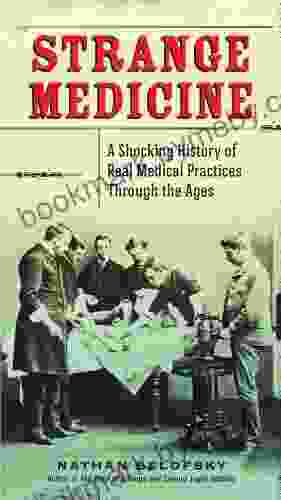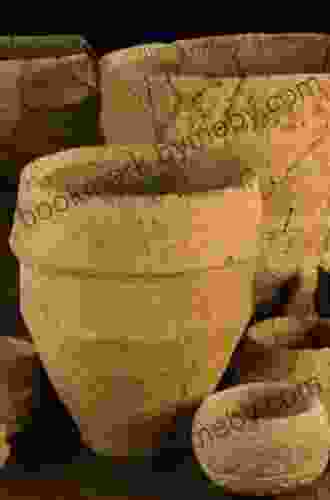Shocking History of Real Medical Practices Through the Ages

Prepare to be horrified and amazed...
As we delve into the shocking history of real medical practices through the ages, we'll explore the bizarre and often barbaric techniques that were once considered cutting-edge medicine. From bloodletting to trepanation, leech therapy to lobotomies, we'll meet the eccentric and sometimes deranged doctors who pioneered these practices, and we'll learn about the patients who endured them.
So, if you're strong of stomach and curious about the dark side of medical history, read on...
4.4 out of 5
| Language | : | English |
| File size | : | 1038 KB |
| Text-to-Speech | : | Enabled |
| Screen Reader | : | Supported |
| Enhanced typesetting | : | Enabled |
| Word Wise | : | Enabled |
| Print length | : | 220 pages |
Bloodletting: The Ancient Remedy for Everything

Bloodletting was one of the most common medical practices for centuries. It was believed that bloodletting could cure a wide range of diseases, from headaches to the plague. The theory was that by removing "bad" blood from the body, the patient's health would be restored.
Bloodletting was usually performed by a barber-surgeon. The barber-surgeon would make a small incision in the patient's vein and then allow the blood to flow out. Sometimes, the barber-surgeon would use a special device called a fleam to make the incision.
Bloodletting was a very painful procedure, and it often led to infection. In many cases, bloodletting actually made the patient's condition worse.
Trepanation: Drilling Holes in the Skull

Trepanation is the practice of drilling holes in the skull. It was believed that trepanation could cure a variety of diseases, including epilepsy, headaches, and mental illness. The theory was that by creating a hole in the skull, the evil spirits that were causing the disease could escape.
Trepanation was a very dangerous procedure, and it often led to death. In many cases, the patient would die from infection or from the brain damage caused by the drilling.
Leech Therapy: Sucking the Bad Blood

Leech therapy is the practice of using leeches to suck blood from the body. It was believed that leech therapy could cure a wide range of diseases, from headaches to rheumatism. The theory was that by removing "bad" blood from the body, the patient's health would be restored.
Leech therapy was a very painful procedure, and it often led to infection. In many cases, leech therapy actually made the patient's condition worse.
Lobotomies: The Barbaric Treatment for Mental Illness

A lobotomy is a surgical procedure that involves cutting the connections between the frontal lobes of the brain and the rest of the brain. It was believed that lobotomies could cure a variety of mental illnesses, including schizophrenia, depression, and anxiety. The theory was that by severing the connections between the frontal lobes and the rest of the brain, the patient's personality and behavior would be changed.
Lobotomies were very dangerous procedures, and they often led to death or permanent disability. In many cases, lobotomies actually made the patient's condition worse.
The Rise of Modern Medicine
The development of modern medicine in the 19th and 20th centuries led to a decline in the use of these barbaric practices. However, some of these practices are still used today, albeit in a more refined form.
For example, bloodletting is still used to treat certain medical conditions, such as sickle cell anemia. Trepanation is still used to treat certain types of brain injuries. Leech therapy is still used to promote blood flow to certain areas of the body.
As we look back on the history of medical practices, we can be thankful for the advances that have been made in modern medicine. However, it is important to remember the lessons of the past, so that we can avoid making the same mistakes in the future.
The history of medical practices is a fascinating and often shocking one. It is a story of human ingenuity and suffering, of progress and setbacks. As we learn from the mistakes of the past, we can continue to build a better future for medicine and for all of humanity.
4.4 out of 5
| Language | : | English |
| File size | : | 1038 KB |
| Text-to-Speech | : | Enabled |
| Screen Reader | : | Supported |
| Enhanced typesetting | : | Enabled |
| Word Wise | : | Enabled |
| Print length | : | 220 pages |
Do you want to contribute by writing guest posts on this blog?
Please contact us and send us a resume of previous articles that you have written.
 Book
Book Novel
Novel Page
Page Chapter
Chapter Text
Text Story
Story Genre
Genre Reader
Reader Library
Library Paperback
Paperback E-book
E-book Magazine
Magazine Newspaper
Newspaper Paragraph
Paragraph Sentence
Sentence Bookmark
Bookmark Shelf
Shelf Glossary
Glossary Bibliography
Bibliography Foreword
Foreword Preface
Preface Synopsis
Synopsis Annotation
Annotation Footnote
Footnote Manuscript
Manuscript Scroll
Scroll Codex
Codex Tome
Tome Bestseller
Bestseller Classics
Classics Library card
Library card Narrative
Narrative Biography
Biography Autobiography
Autobiography Memoir
Memoir Reference
Reference Encyclopedia
Encyclopedia Susan Wood
Susan Wood Jacob T Schwartz
Jacob T Schwartz Lewis Spears
Lewis Spears Mark Harper
Mark Harper Malcolm Hebron
Malcolm Hebron Kathleen E Woodiwiss
Kathleen E Woodiwiss Reyna Grande
Reyna Grande J C Amberlyn
J C Amberlyn William C Dear
William C Dear John Markoff
John Markoff Rachel Dwyer
Rachel Dwyer James Chandler
James Chandler Simon Elliott
Simon Elliott Jack Mcdevitt
Jack Mcdevitt Jaime Hernandez
Jaime Hernandez James Carver
James Carver J L Torres
J L Torres Jake Scott
Jake Scott Isee Exam Preparation Experts
Isee Exam Preparation Experts James Cowan
James Cowan
Light bulbAdvertise smarter! Our strategic ad space ensures maximum exposure. Reserve your spot today!

 Mitch FosterThe Ultimate Beginner's Guide to Watercolor Painting: A Journey of Creativity...
Mitch FosterThe Ultimate Beginner's Guide to Watercolor Painting: A Journey of Creativity...
 Fernando PessoaEmbark on an Unforgettable Journey: Witness the Transformative Power of "The...
Fernando PessoaEmbark on an Unforgettable Journey: Witness the Transformative Power of "The... Langston HughesFollow ·8.4k
Langston HughesFollow ·8.4k Orson Scott CardFollow ·2.1k
Orson Scott CardFollow ·2.1k Yasushi InoueFollow ·15k
Yasushi InoueFollow ·15k Emanuel BellFollow ·4.8k
Emanuel BellFollow ·4.8k Heath PowellFollow ·12.6k
Heath PowellFollow ·12.6k Dallas TurnerFollow ·12.6k
Dallas TurnerFollow ·12.6k Gabriel HayesFollow ·4.7k
Gabriel HayesFollow ·4.7k Harold PowellFollow ·3k
Harold PowellFollow ·3k

 Phil Foster
Phil FosterThe Unforgettable Easter: Ramona's Journey of Discovery...
Embark on Ramona's Extraordinary Easter...

 Levi Powell
Levi PowellThe Old City and Mount of Olives: A Journey Through...
Jerusalem, a city etched into the annals of...

 Henry Hayes
Henry HayesThe Clearances: A Journey Through Scotland's Hidden...
In the 18th and 19th...

 Edward Reed
Edward ReedUnravel the Enigmatic 'Path of Bones' with Cassie Quinn...
Step into the...
4.4 out of 5
| Language | : | English |
| File size | : | 1038 KB |
| Text-to-Speech | : | Enabled |
| Screen Reader | : | Supported |
| Enhanced typesetting | : | Enabled |
| Word Wise | : | Enabled |
| Print length | : | 220 pages |












